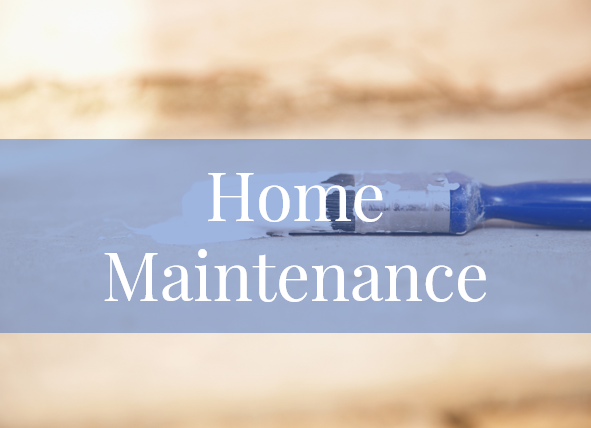How to Handle Unexpected Issues During a Renovation
/Renovating your home can feel like the beginning of a beautiful dream—you imagine gleaming countertops, fresh paint, and a space that finally reflects your style and functionality needs. But just like that time you tried to assemble IKEA furniture without reading the instructions... things can take a turn. Renovations often come with a few “surprises”—and not the good kind like hidden hardwood under your old laminate. We're talking rot, asbestos, or mysterious plumbing choices that defy logic and gravity.
It’s not your fault. You didn’t sign up for a rollercoaster. But when the ride starts, we’re here to help you hold on tight (and maybe even enjoy it a little). Let’s walk you through how to handle those unexpected issues so they don’t derail your entire project—or your sanity.
Understanding Common Unexpected Issues
Before we talk about solving them, let’s talk about what they even are. These are the sneaky renovation surprises that like to show up uninvited—often when you’ve just gotten excited about picking paint colours.
Structural Problems: Water damage, rot, or a DIY deck someone built using hopes and dreams instead of code-compliant framing.
Outdated Electrical & Plumbing: 1960s wiring that wouldn’t pass a flashlight test, or pipes that look like they came from an ancient Roman bathhouse.
Permit & Code Violations: Surprise! That previous homeowner skipped the permit process and now you get to clean it up.
Asbestos & Mold: The horror movie classics of older homes—creepy, toxic, and expensive to remove.
Supply Delays: Waiting six weeks for a faucet because apparently it’s being handcrafted by artisans in the Alps.
Budget Overruns: The moment when your wallet starts whispering, "Please... make it stop..."
Planning for the Unexpected
Now, let’s be real—you can’t plan for everything, but you can plan to be flexible. And that’s where the magic happens.
Contingency Fund: We recommend setting aside 10–20% of your total budget for the unexpected. Think of it as a financial hug for future-you. We’ve written an entire blog on why this is so important—click here to read it—because when the unexpected shows up (and it will), having that financial buffer can make all the difference.
Thorough Inspection: Get a professional in before the sledgehammer starts swinging. They might not catch everything, but they can often spot major red flags.
Clear Contract: A good contract outlines how changes are handled—because no one wants to debate the definition of “included” mid-demolition.
Regular Check-Ins: Communication is everything. Regular updates keep surprises manageable and your blood pressure in check.
Permits & Code Compliance: Don’t skip the paperwork. It’s not glamorous, but it saves you from future heartbreak—and city fines.
When the Unexpected Hits: A Survival Guide
Here’s how to handle it when your renovation decides to throw a tantrum.
1. Stay Calm (We Know… Easier Said Than Done)
Take a breath. This is a bump—not a disaster. Panicking won’t solve it, but a level head can.
2. Bring in the Pros
You’re not expected to know how to fix rotted joists or rewire a bathroom. That’s what we're here for. Let your contractor guide you.
3. Review Your Options
There’s almost always more than one path forward. We’ll walk you through the pros, cons, costs, and timelines. No pressure, just support.
4. Make a Plan
Once you know your options, make the call. And once you’ve made it, trust the process. It’s okay to feel nervous—that just means you care. We know this can be the hardest part. Renovations involve your money, your time, and your home—so it’s no wonder that the instinct to stay in control kicks in hard. For many homeowners, that urge to ask daily updates or micromanage every step isn’t about mistrust—it’s about fear. Fear that something will go wrong, that they’ll miss something important, or that they won’t be looped in when they should be.
We’ve seen this firsthand with some of our most loyal, long-term clients—people who have worked with us for over a decade and know we’ll always have their back. And yet, when the project is bigger than anything they’ve done before, that fear sneaks in. Suddenly, the need to double- and triple-check everything becomes overwhelming—not just for them, but for us too.
So here’s our loving truth: constantly needing updates doesn’t ease the process—it complicates it. We want you to feel informed, confident, and cared for, which is exactly why we send regular updates, schedule check-ins, and make ourselves available for any big questions or decisions. But once a plan is in place and the work is underway, the best thing you can do is trust that we’ve got it covered. Because we do.
5. Document the Changes
We’ll track changes, extra costs, and revised timelines in writing. It’s not just good business—it’s peace of mind.
Once a change has been agreed upon, we’ll formalize it with a change order. It’s a simple one-page add-on to your original contract that outlines the additional work, the associated cost, and any impact on the timeline. In most cases, the extra amount is simply added to your final payment—but in some situations, especially if the change is significant or involves special-order materials, a portion (or even the full amount) may need to be paid up front. Either way, we’ll walk you through it so there are no surprises—just clarity and confidence moving forward.
6. Communicate with Everyone
Don’t assume that if you know, everyone else does. We help coordinate with trades, suppliers, and anyone else involved to keep things running smoothly.
7. Adjust Accordingly
A new timeline or budget doesn’t mean failure. It means adaptability. And that’s a win.
Renovations are personal—and so are we. If you’re looking for a contractor who listens, communicates, and treats your home like it matters (because it does), get to know us here.
Real-Life Renovation Plot Twists
We’ve seen it all—and fixed it all.
🛠 Example 1: Hidden Structural Damage
Mid-kitchen reno, we found rotted floor joists hiding under old tile. With the help of a structural engineer, we replaced them. The clients? Calm, involved, and relieved that it was discovered before new cabinets went in.
⚡ Example 2: Outdated Electrical
While renovating a vintage bathroom, we found... “creative” wiring. The kind that made even the electrician raise an eyebrow. We rewired safely and brought the home into the 21st century—no fires included.
📦 Example 3: Supply Delays
A client’s custom vanity took its own sweet time arriving. Instead of pausing everything, we rearranged the work schedule to keep the project moving. Flexibility is a renovation superpower.
Proactive Steps to Keep Chaos at Bay
Here’s how to set yourself up for fewer surprises—and more peace of mind.
Regular Inspections: Keep your eyes (and our experienced ones) on things. Catching issues early can save weeks of delays.
Flexible Timelines: Build in a little wiggle room. We promise, your future self will thank you.
Open Communication: Never hesitate to ask a question or share a concern. Transparency is one of our core values.
Quality Materials: The cheapest option often costs the most long-term. Durable, trusted materials can spare you trouble down the road.
When the Budget Starts to Creep
No one likes unexpected expenses. But if you’ve got to spend more, let’s make sure it’s worth it.
Prioritize: What’s essential? What can wait? (Hint: heated floors can wait but if you decide you want them later, it means ripping up the existing floor to install the floor heat. Some things just make sense to do during the renovation. However, that heated towel rack…that can definitely wait until there’s room in the budget for it)
Seek Alternatives: We’re full of clever, cost-effective ideas that still look stunning.
Reassess the Scope Instead of the Price: If the total cost is higher than you'd hoped, the solution isn’t to haggle over the price—we don’t inflate our numbers just to leave room for negotiation. Our pricing reflects the true cost of quality workmanship, licensed trades, and doing the job right the first time.
That said, there are ways to bring your project into a more comfortable range. For example, you might choose to take on a small portion of the work yourself—like painting—or swap out a high-end material (such as tile) for something more budget-friendly (like luxury vinyl plank). These changes reduce the scope of the project, not the quality—and that’s what can bring the overall cost down.
We’ll always work with you to help prioritize what matters most and find smart, practical ways to adjust the project without compromising on safety or satisfaction.
Explore Funding: Sometimes it's worth stretching the budget for long-term value—but only in a way that feels comfortable for you. If your dream renovation is just a bit beyond your current budget, don’t panic—there are options. From using savings to tapping into home equity, there are several ways to finance your project responsibly. We’ve broken it all down in a dedicated blog post, so if you’re wondering how to pay for your renovation without losing sleep, click here to check it out.
Track Every Penny: It’s your money. Let’s make sure it’s working hard for you.
The Permit & Code Violation Curveball
Sometimes during a renovation, we uncover more than just questionable paint colours or mystery stains—we find out that someone in the past got a little too confident with their DIY skills. Maybe they skipped permits to “save time,” or installed wiring that looks like it was inspired by a spaghetti dinner. While it’s never fun to discover that something wasn’t done to code, it’s better to find out now—when we can fix it properly—than have it cause major problems down the road. So let’s talk about what happens when one of those curveballs shows up.
Stop Work (Temporarily): Not forever—just long enough to make it right.
Call the Authorities (the good kind): Your local building department or the Electrical Safety Authority can help. They’re not the enemy—they’re your roadmap back to legal. It’s also possible that your contractor will already have the solution to fix the problem. Get them to explain everything to you and let you know what’s required to fix it.
Hire the Right People: Code compliance isn’t a DIY situation. Let us bring in the right team.
Document Everything: You’ll want proof of what’s been fixed for resale or future peace of mind.
Learn & Prevent: We’ll help make sure you’re never caught off guard again.
Final Thoughts
Unexpected issues during a renovation can feel overwhelming—but you’re not alone in it. The truth is, things will pop up. But when they do, we’ll be right here, walking you through it step-by-step, explaining your options, and helping you make decisions with confidence and clarity.
We don’t just renovate homes. We guide people through one of the most exciting—and yes, sometimes challenging—transformations they’ll ever take on. Our job is to keep things transparent, supportive, and calm—even when surprises show up behind the drywall.
So take a breath, grab a coffee, and remember: this renovation is about creating the home you love. We’ll help you get there—bumps and all.
Still with us? Then you’re clearly the kind of homeowner who likes to be ready for anything—we love that about you. If you're in the mood to keep learning (or just want to avoid another scroll through Pinterest), here are some other blogs you’ll definitely want to check out.
The Importance of Licensed Trades in Home Renovations
Top 10 Renovation Questions We’re Asked All the Time
Why Quicker Isn’t Always Better in Renovations
DIY vs Hiring a Professional: Know When to Call in the Experts
Renovations come with enough unknowns—your contractor shouldn’t be one of them. If you're dreaming of a beautiful, well-managed renovation (with a team that actually tells you what’s going on), let’s talk. Contact us today to get started—we’re here for the bumps, the fixes, and the transformation.


















